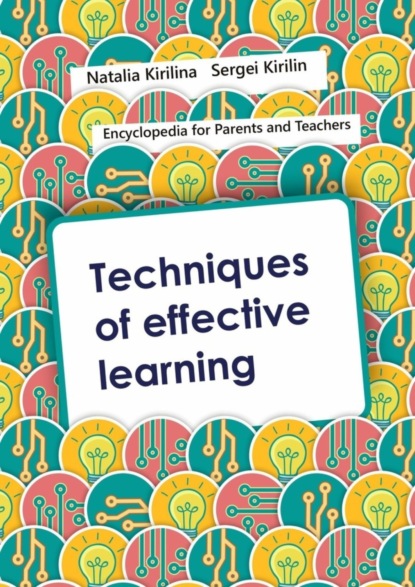По всем вопросам обращайтесь на: info@litportal.ru
(©) 2003-2024.
✖
Techniques of Effective Learning
Настройки чтения
Размер шрифта
Высота строк
Поля
Although we already knew part of what was written and had implemented it in our lives and in the learning process (again from publications of @rkirilina’s “Glad to Learn”), we also discovered something new and intend on trying it and getting more results.
It is especially valuable that all the techniques are given in a playful format which is interesting for children.
It is a big advantage that all the techniques were created keeping in mind the individual psyche and maturity level of the children.
The information is given in a structured, albeit condensed, format. These guidelines should be enough for any parent who thinks and cares about their child to understand and apply to their own lives.
I recommend it!
Natasha Litovkina
The book Techniques for Effective Learning from A to Z is simply a treasure trove for parents who want their children to learn more easily and with interest. It contains many helpful techniques which make it much easier for children to learn. The step-by-step description of every helper explains what and how to do in the specific technique. I read the book in one go. I recommend this book to all parents. The advice in this book can help you make it easier for your child to take in information when learning, thereby helping them remember the information forever.
Svetlana Belykh
N
1 expert in teaching children effectively in school. Mom of two school-aged boys and one daughter. Renata started homeschooling her sons in 2016.
Worked her way up from teacher to principal of a public school and knows all the pitfalls of the education system.
Practitioner; all the techniques of effective learning have been tested by thousands of children.
Creator of the methods “The complex put simply” and “Techniques for effective learning”.
The students’ geography covers all of Russia, countries of the former Soviet Union, Europe, USA, and Canada.
Founder and director of “School for Smart Kids” and “School 60 minuts”
Author of the blog “Glad to Learn” http://gladtolearn.ru/blog/
How to develop a child’s mind and help them learn
Fundamentals to help you learn how children take in new information and develop new abilities and skills
If you are worried about the development of your child then remember that there are learning strategies and methods which can help them learn more easily.
I suggest a quick dive into the theory behind how the brain works and how new information, abilities, and skills are built into it.
Later we will look at the best learning strategies at every level of a child’s brain development.
First, though, here are some important facts:
Children learn by creating connections between brain cells which are called “neural pathways”.
The more often these neural pathways are used, the stronger they become. For this reason, practice helps improve skills.
Creating the circuit system of the brain
Every brain cell (neuron) looks like an ordinary tree.
When children learn information about the world, their neurons branch out and create connections between each other. The resulting neural pathways are similar to electrical wires. Each neuron can have several connections with other neurons.
These “wires” do not touch each other.
Instead, they release information in the space between neurons, known as “synapses”. The brain’s chemical elements (neurotransmitters) help the system communicate.
How neural pathways work
Each neuron pathway is like a schematic. When electricity goes through the circuit, it receives an answer.
For example, when you flip a light switch, the light turns on. Some brain circuits, like those for breathing and blood circulation, are already developed at birth. Other schematics are dependent on activity.
They need input to work, and the more input data they receive, the better they work. This input is more complex than simply flipping a switch.
This occurs for every experience and event a child goes through.
Sounds, sights, tastes, smells, as well as feelings and emotions help the brain release neurotransmitters and control these schematics.
Pruning or forgetting
Neural pathways which are frequently used become stronger. This is similar to a paved road versus an ordinary path.
Schematics which are not used become weaker and disappear over time. This process is called “pruning” or simply forgetting.
This is normal. Everyone has more schematics than they need. “Pruning” occurs gradually over one’s whole life.
Children’s minds are fairly flexible in order to constantly work to create new schematics and improve frequently used neural pathways. This process is known as “plasticity”.
Strength of plasticity
“Plasticity” is especially important for children. Their brains process information differently but do not always use the brain’s chemicals efficiently.
These differences make it more difficult to create or reinforce some neural pathways.
Teaching children the techniques of effective learning and information processing makes it possible to show children how to use their brain’s plasticity.
Children not only learn better and more easily, they also experience less difficulties and stress.
Learning through feelings
Children do not need to think about neural pathways.
This occurs naturally when they experience the world and learn about it.
The Swiss psychologist Jean Piaget created a well-known theory about how children develop skills of recognition and thought.
Initially children use their senses of sight, hearing, touch, taste, and smell to start establishing connections. They taste, shake, and throw items. They also start to roll, reach for objects, and in the end, crawl and walk.





